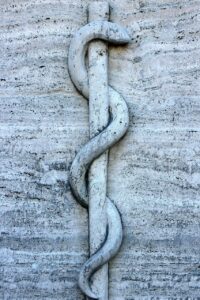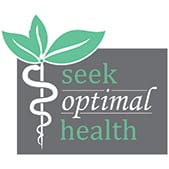Osteopathic Medicine: Truths and Misconceptions

Image by Manfred Antranias Zimmer from Pixabay
When it comes to healthcare, it often seems that there is a distinct division between what is seen as mainstream or standard and the options that are grouped as “alternative” modalities or approaches. There is an endless and ever expanding list of options in the realm of alternatives to mainstream care. Our experience as osteopathic physicians has been that many people are not entirely sure where osteopathy fits in this discussion. Efforts to describe osteopathic medicine have unfortunately often only captured parts of the whole, and, as a result, birthed many misconceptions about who we are and what we do. In this blog, we hope to shed some light on osteopathic medicine and dispel some of the most common misconceptions about our training, qualifications, and approach to care.
What Is Osteopathy?
Osteopathic medicine is a model of healthcare based on a clearly outlined set of principles. It emphasizes interconnectedness among all of the body’s systems rather than treating them as separate. Rather than being disease focused, its emphasis is on maintaining and improving overall health and well-being through use of manual techniques, lifestyle modifications, and patient education. The framework for this approach was formulated in the mid to late 19th century by Andrew Taylor Still, M.D. It has evolved much over the years, and now exists as a respected and highly regulated healthcare profession throughout the world. Dr. Still’s original approach was radical in the mid-1800’s, but many of his ideals have given rise to countless other healing approaches, many of which even credit osteopathic medicine as their origin (craniosacral therapy, naprapathy, rolfing, orthobionomy, to name just a few). Despite this, many of the following misconceptions persist.
Misconception 1: Osteopathic Manipulation is Just About Adjusting Joints that are Misaligned
One of the most prevalent misconceptions about osteopathic medicine, osteopathic manipulation in particular, is that it’s all about making spinal adjustments or adjusting joints. While spinal manipulation is one of the techniques utilized by osteopathic practitioners, it’s only a small part of the broader picture. Osteopathic practitioners are trained to use a wide range of manual techniques – some quite gentle and others more forceful. Protocols may provide a starting point for newer osteopathic practitioners, but the expectation is that with time and experience, protocols inevitably give way to recognition of palpatory cues that guide us to do whatever adjustment to the body is needed for an individual patient in the moment. Some osteopathic treatments are targeted at the musculoskeletal system, but many incorporate treatment of the neurological system and viscera as well. Treatment of the cranium and sacrum are not separated out into a distinct treatment modality, but rather they are incorporated into treatment of the body as a whole. In all cases, practitioners who have received a full osteopathic education are taught that their treatments should be based on their understanding and study of anatomy and that this understanding will allow them to build ever more precision in their treatments. The overarching goal of osteopathic treatment is to improve the body’s ability to function as a whole, not just to correct misaligned joints.
Misconception 2: Osteopathic Medicine is Not Evidence-Based
Another common misconception is that osteopathic medicine lacks scientific validation. This couldn’t be further from the truth. Osteopathic medicine is rooted in scientific principles and supported by a growing body of research. Like all truly individualized approaches, Osteopathic treatments do not lend themselves to research using double-blind placebo controls, but basic science research supporting the underlying principles is robust. There are also many studies demonstrating clinical utility, decreased utilization of resources, and patient satisfaction. Osteopathic physicians (United States trained D.O.’s) go through extensive medical training, just like their allopathic (M.D.) counterparts, and they must pass rigorous licensing exams. Osteopathy emphasizes a holistic approach to healthcare, considering not only the symptoms but also the underlying causes of illness.
Misconception 3: Osteopathic Practitioners Are Not Real Doctors
There are two paths for people to become trained in osteopathic medicine. In the first path, they are trained in accredited Osteopathic medical schools in the United States. These doctors of osteopathy (D.O.’s) are fully licensed physicians and have completed four years of medical school, in most cases followed by residencies and, in some cases, fellowships in various medical specialties. They are trained to diagnose, treat, and prevent illnesses, just like medical doctors (M.D.’s). D.O.’s trained in the United States may even serve as primary care physicians and have hospital privileges. In reality, this misconception is only partly untrue because D.O.’’s trained in programs outside the United States are not doctors, although their training programs are extensive, and usually span about 5 years. These osteopathic practitioners operate in the United States under non-physician licenses such as massage. In other countries, they often have specialized licensing as physiotherapists. These practitioners do not have the ability to diagnose disease, order labs, or prescribe medications, although their training as it relates to the musculoskeletal system may be similar to U.S. trained D.O.’’s.
Misconception 4: Osteopathic Manipulation is Only for Musculoskeletal Issues
While osteopathic manipulation is indeed effective in treating musculoskeletal conditions such as back pain, neck pain, and joint problems, it is not limited to these issues. Osteopathic practitioners are trained to address a wide range of medical conditions, including cardiovascular, respiratory, gastrointestinal, and neurological disorders. Osteopathic physicians are taught to incorporate manual diagnosis into their general medical exams, and to use the information acquired to further support their diagnostic process. They can incorporate manual treatments of their findings into their overall treatment plan. They consider the whole body when diagnosing and treating patients, aiming to restore balance and promote overall health.
Misconception 5: Osteopathic Medicine is an Alternative Medicine
Some people mistakenly classify osteopathic medicine and manipulation as alternative or complementary modalities. However, Osteopathy in general is a recognized and regulated healthcare profession in many countries, including the United States. Osteopathic medicine is integrated into the healthcare system and is often practiced alongside conventional medicine. Osteopathic physicians can prescribe medication, perform surgery, and provide a full spectrum of medical care. As part of the curriculum of accredited United States medical schools, osteopathic manipulative medicine should actually be more integrated as a standard of care than it has been to date, rather than seen as an alternative therapy.
Conclusion
Osteopathic medicine is a misunderstood profession that has made significant contributions to the field of healthcare. It offers a holistic approach to wellness, focusing on the interconnectedness of the body’s systems. Osteopathic physicians are fully trained and licensed medical doctors who provide comprehensive care, not just “bone cracking.” It’s essential to dispel the various misconceptions related to osteopathy to ensure that patients have accurate information when considering their healthcare options. Osteopathic manipulation is not an alternative modality; it’s an important piece of a valuable and evidence-based branch of medicine that plays a crucial role in promoting health and well-being.
